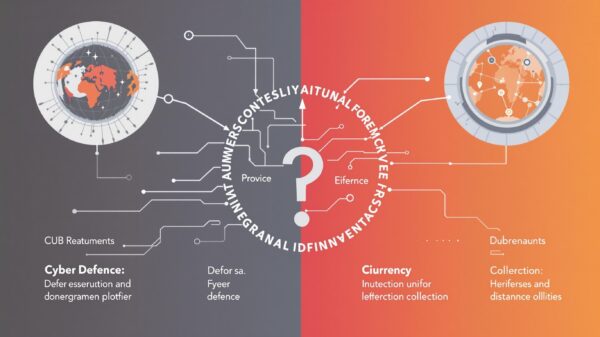Web3 represents the internet’s next phase, blending virtual space with real value. By integrating blockchain technology, we gain decentralized systems. This fosters untapped potential for economic, social, and tech innovation. Yet, new territory comes with novel risks.
The blossoming of Web3 highlights cybersecurity’s burgeoning relevance. Now, not only do we guard our data, but also valuable digital assets. The threats and vulnerabilities in this new realm are then key to understand for safe navigation.
The Threat landscape in Web3
Web3’s potential is counterbalanced by emerging threats that necessitate robust cybersecurity measures. The decentralization inherent in Web3 architectures, while enhancing user autonomy, also exposes users to heightened risks. Wallet compromises and password hacking represent direct attacks on individual assets. Moreover, the complexity and novelty of smart contracts present vulnerabilities that malicious actors can exploit.
Beyond technical breaches, the human factor remains a significant weak point. Scams, phishing attempts, and social engineering tactics are increasingly sophisticated, often targeting unsuspecting users. In this landscape, prioritizing online protection is crucial. It involves not only implementing advanced security protocols but also educating users about safe digital practices. This dual approach aims to safeguard digital wealth and maintain trust in the evolving Web3 ecosystem.

Protecting Your Digital Assets
Wallet Security:
Hardware and software wallets are methods of stowing digital assets. The former provides offline storage, decreasing compromise chances. However, they can be expensive and less portable. On the opposite side, software wallets are accessible and often free. But, their online nature makes them more susceptible to breaches.
‘Seed phrase‘ is your wallet recovery keyword list. Guarding it is paramount as loss or exposure could result in a complete asset wipeout. Writing it down privately and securely storing it physically can help.
Multi-signature wallets require multiple parties to authorize a transaction. This emphasis on consensus reduces the chances of asset misappropriation, providing an additional layer.
Password Hygiene:
Always choose strong and unique passwords. Use a mix of letters, numbers, and symbols to seal possible breach points. Password managers are a solid choice for securely tracking different passwords.
Leverage the benefit of Two-factor Authentication (2FA). It’s a simple step-up from single password authentication, providing an extra cushion of security.
Navigating the Web3 Landscape Safely
Smart Contract Security:
Interacting with unsavory smart contracts can cause irreversible damage. It is crucial to research projects thoroughly before jumping aboard. Make certain to use trusted platforms and dApps with sturdy security defenses.
Scams and Phishing:
Beware of common Web3 scams such as pump-and-dumps, rug pulls, and fake airdrops. Routinely verify website URLs and scrutinize social media handles for authenticity. An iron-clad rule: Never share private keys or seed phrases with anyone.
Social Engineering:
A healthy dose of skepticism towards unsolicited offers/messages helps in securing digital territory. Avoid impulsive investments based on hype or too-good-to-be-true promises. Independent research and trusted information sources are your best allies against deception.

Advanced Cybersecurity Practices
Privacy Tools:
VPNs and Tor browsers can shield your online activity. However, they’re not foolproof and have their limitations. Secure browsers and privacy-focused extensions can enhance protection levels. Employ tracking prevention and anti-malware software for an additional safety layer.
Blockchain Forensics:
Blockchain forensics can trace stolen funds and thwart miscreants. Report suspicious activities or scams to the appropriate authorities. Numerous resources exist to aid victims of Web3 cybercrimes.
Conclusion
To summarize, our journey in secure Web3 navigation includes safe practices for digital asset and password security, along with smart contract vigilance.
Keep a keen eye for scams/phishing attempts and beware of social engineering lures. Apply advanced security practices using privacy tools and stay informed on the blockchain forensics front.
Cybersecurity in Web3 demands continuous learning due to its fast-evolving nature. Cultivate safe online habits and don’t hesitate to share experiences. After all, knowledge shared is knowledge multiplied. Stay safe in this exciting new landscape.






















